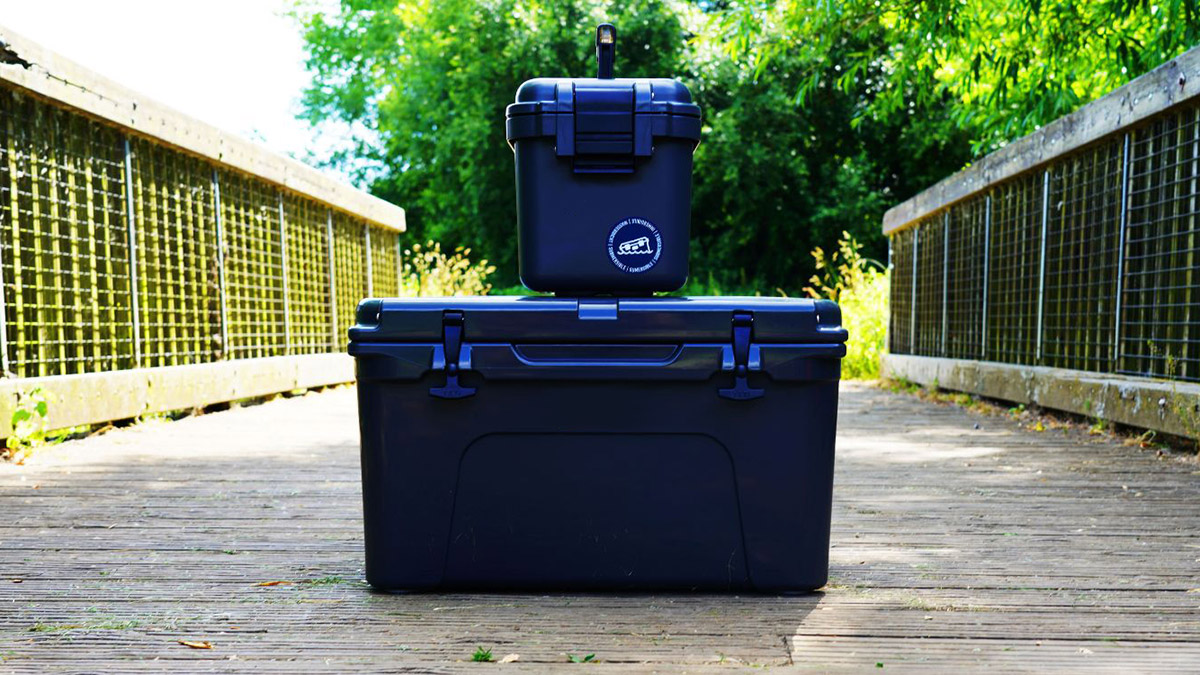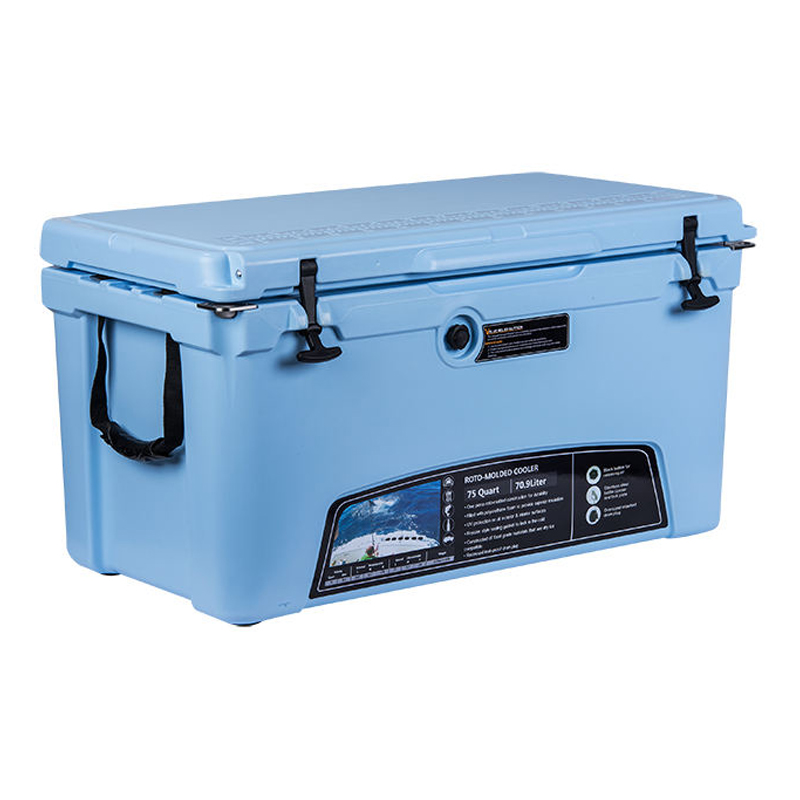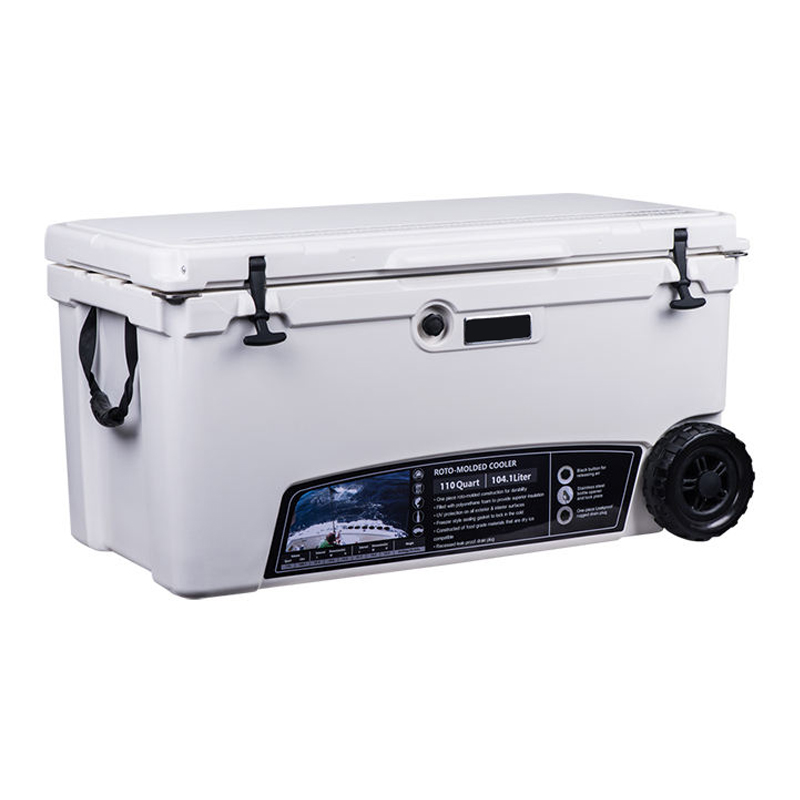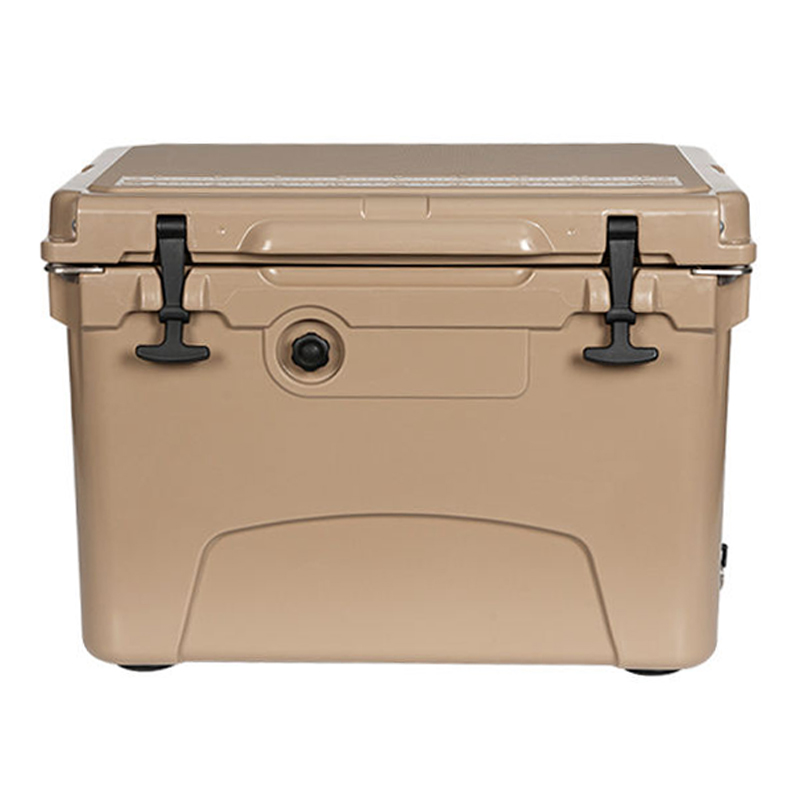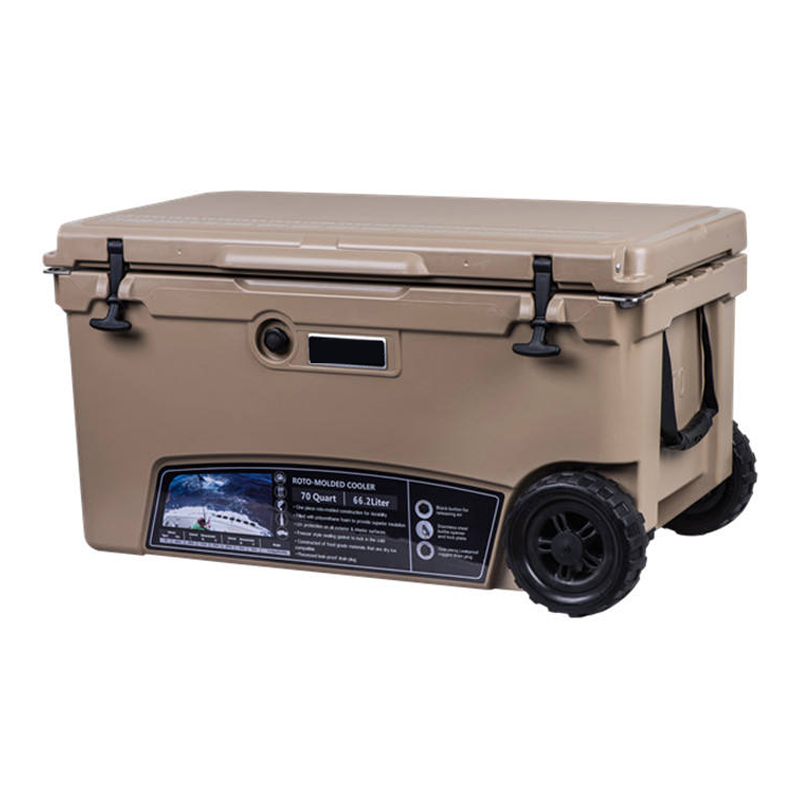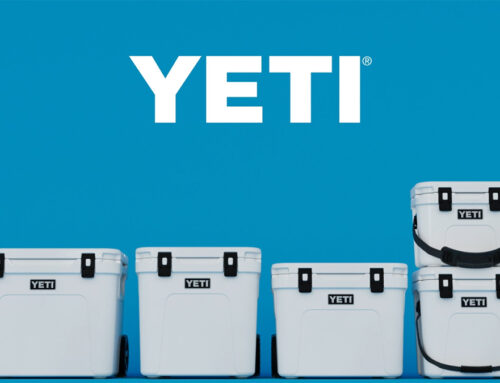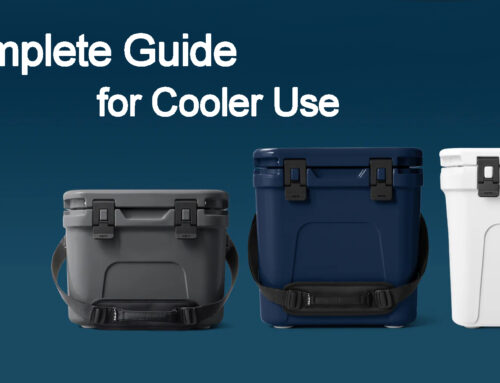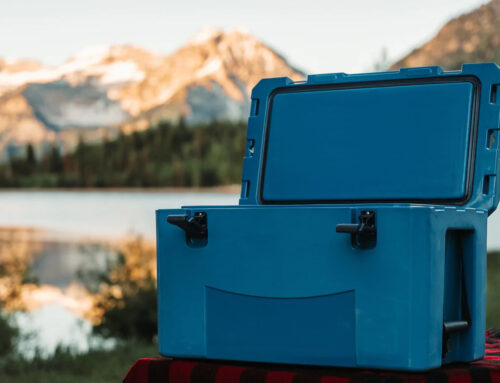Whether you’re gearing up for a weekend camping adventure, a fun-filled day at the beach, a peaceful fishing trip, or a lively backyard barbecue, cooler boxes and ice chests are your must-have sidekicks. They keep your food fresh, your drinks chilled, and help prevent spoilage even when the elements are working against you. A solid cooler is the key to enjoying your time outdoors without worrying about your provisions going bad.
But here’s the secret: knowing how your cooler works is the game-changer. Understanding its design and how it maintains that perfect chill allows you to pack smarter, keep your stuff cooler for longer, and choose the right cooler for every adventure. When you grasp the science behind its insulation and cooling mechanisms, you’ll maximize ice retention and get the most out of your investment—especially if you opt for a premium, high-performance cooler.
- 1. What Is a Cooler Box / Ice Chest?
- 2. Basic Working Principle
- 3. How Ice Preserves Food and Drinks
- 4. The Role of Insulation
- 5. Heat Transfer Mechanisms in a Cooler
- Frequently Asked Questions
- 6. Types of Coolers: Powered vs. Passive
- 7. Why KingStar Cooler Boxes Excel in Cooling Performance
- 7.1 Advanced Insulation System for Extended Ice Retention
- 7.2 Durable Materials and Reinforced Construction
- 7.3 Airtight Lid Seal and Precision Fit
- 7.4 Integrated Easy-Drain Systems
- 7.5 Practical Storage Layouts Optimized for Real Use
- 7.6 User-Focused Details for Maximum Convenience
- 7.7 Customization to Meet Diverse Market Needs
- 8. Tips for Maximizing Cooler Efficiency
- Conclusion
- Frequently Asked Questions
1. What Is a Cooler Box / Ice Chest?
A cooler box, also referred to as an ice chest, is an insulated container used to keep food and drinks cold during outdoor activities. These boxes are designed to retain the cold temperature of the contents inside, often through the use of ice or ice packs. Cooler boxes are essential for outdoor events like camping, fishing, tailgating, or long road trips, ensuring that perishable goods remain fresh for an extended period.
In different regions, cooler boxes may be known by various names. For instance, in some places, they are commonly referred to as “iceboxes,” while others might call them “eskys,” particularly in Australia. Despite the different names, the core function remains the same: providing a portable, insulated environment for keeping items cool and fresh.
While cooler boxes are typically made of durable materials like plastic and come with insulation to prevent heat transfer, the design and features can vary based on the intended use and quality. From basic models to high-performance options, cooler boxes offer different levels of insulation, cooling duration, and capacity. The versatility and practicality of cooler boxes make them a staple for those who enjoy outdoor activities and need a reliable way to store perishables away from the heat.
2. Basic Working Principle
The efficiency of a cooler box comes from its smart combination of structure, materials, and basic thermal control principles. Instead of actively generating cold, a cooler works by slowing down the entry of heat from the outside environment and preserving the low temperature provided by ice or other cold sources inside.
Here’s how the design and materials make it happen:
2.1 Multi-Layered Insulated Structure
- Outer Shell: Typically made from durable plastic such as polyethylene or polypropylene, the outer shell provides strength and resistance to impacts, scratches, and UV exposure. This robust layer acts as the first line of defense against external conditions.
- Insulation Core: Sandwiched between the outer shell and inner liner, you’ll find the critical insulation layer, most often composed of polyurethane (PU) foam or expanded polystyrene (EPS). These materials have extremely low thermal conductivity, meaning they slow down the movement of heat from the outside to the inside. Think of it as wrapping your cold items in a thermal “shield” that blocks the external heat.
- Inner Liner: The inner surface, usually made of food-grade plastic like polyethylene, is designed to be smooth, hygienic, and resistant to absorbing odors or stains. It also helps maintain the cold by providing an additional barrier between the ice and the outside heat.

2.2 Optimized Lid and Sealing System
- Tight Seals: The lid of a cooler often features a rubber gasket or sealing lip that minimizes air exchange when closed. By limiting airflow, the cooler traps the cold air inside, much like a well-sealed refrigerator door.
- Hinges and Latches: Strong, secure hinges and latches not only protect the cooler’s contents but also help keep the lid tightly shut, further reducing heat intrusion.
2.3 Materials Designed to Combat Heat Transfer
- Thermal Reflection: Many coolers feature light-colored or UV-resistant coatings on the exterior to reflect sunlight, reducing the amount of radiant heat absorbed when used outdoors.
- Robust Handles and Drain Plugs: Even components like handles and drain plugs are designed to avoid creating “weak spots” where heat could easily enter.
Through this thoughtful combination of multi-layered insulation, efficient sealing, and careful material choice, coolers maximize their ability to maintain cold temperatures for extended periods.
In the following sections, we will dive deeper into the specific factors that influence cooling performance—such as ice behavior, thermal insulation properties, types of heat transfer, and the impact of external conditions.
3. How Ice Preserves Food and Drinks
Ice plays a crucial role in preserving the quality of food and drinks by maintaining a low temperature. Here’s how it works:
3.1 Absorption of Heat Energy (Latent Heat of Fusion):
When ice is placed inside a cooler, it begins to absorb heat from its surroundings (air, food, or drinks) in order to melt. This process requires energy, known as latent heat of fusion.
During melting, the ice doesn’t increase in temperature but instead stays at a constant temperature of around 32°F (0°C). This constant low temperature is crucial for keeping the cooler’s contents cold.
As the ice absorbs heat and melts, it helps maintain a near-freezing environment inside the cooler, which is essential for preserving the freshness of food and the chill of beverages.
3.2 Protecting Food Freshness and Beverage Temperature:
Keeping food at a near-freezing temperature prevents the growth of bacteria and slows down the degradation of perishable items, such as meat, dairy, and fruits. This helps maintain their freshness and prevents spoilage during outdoor trips.
Beverages, especially those that are intended to be served cold, stay at their ideal temperature for longer. Ice ensures that the drinks remain refreshing by keeping them cool, even on hot days.
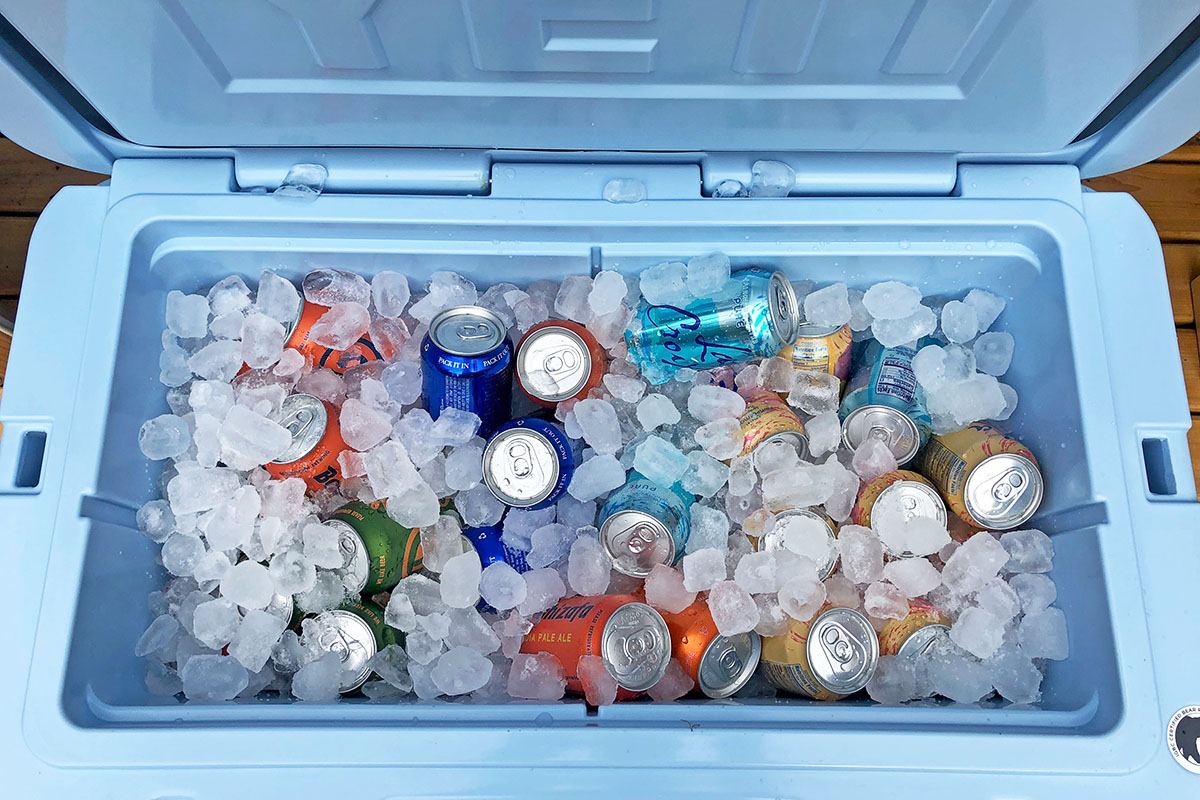
4. The Role of Insulation
Insulation is key to the performance of a cooler box or ice chest, as it significantly slows down heat transfer, ensuring that the ice inside remains intact and the contents stay cold. Here’s how insulation works and why it’s essential:
- Slowing Down Heat Transfer:
- Insulation reduces the rate at which heat flows into the cooler from the outside environment. Without proper insulation, the cooler would quickly absorb heat, causing the ice to melt faster and compromising the temperature of food and drinks.
- The insulation acts as a barrier that minimizes the flow of heat through the cooler’s walls, which helps to maintain the low internal temperature for longer periods.
- Common Materials Used:
- Polyurethane Foam: This is one of the most popular insulation materials used in coolers due to its excellent heat resistance. Polyurethane foam is often injected into the cooler’s walls, creating a thick layer of insulation that traps air and prevents heat from entering.
- Polyethylene: This durable plastic material is used in the construction of many coolers. When used as an outer shell, it provides both insulation and durability, ensuring that the cooler can withstand rough conditions while still keeping the contents cool.
- Importance of Air Pockets:
- Air is a poor conductor of heat, so small air pockets within the insulation material enhance its effectiveness. Materials like Styrofoam, which contain these air pockets, help prevent heat from transferring into the cooler, thus prolonging the cooling effect.
- These trapped air pockets slow down the process of ice melting, giving you more time to keep your food and beverages at the desired temperature.
Effective insulation is vital for any cooler box or ice chest to function properly, ensuring your contents stay cool for extended periods without relying on external power sources.
5. Heat Transfer Mechanisms in a Cooler
Understanding the heat transfer mechanisms in a cooler is essential to grasping how it maintains a cold environment for your food and drinks. There are three main types of heat transfer involved: convection, conduction, and radiation. Here’s how each one plays a role:
5.1 Convection: Minimizing Airflow and Temperature Rise
Convection is the transfer of heat through the movement of air or fluids. In a cooler, warm air can enter if the cooler is opened or if airflow is not controlled. To minimize temperature rise, it’s important to keep the lid closed as much as possible.
When the lid is closed, airflow inside the cooler is limited, preventing warm air from circulating around the ice and helping to maintain a stable cold environment.
5.2 Conduction: Insulating Materials Block Direct Heat Flow
Conduction refers to the direct transfer of heat through solid materials. In a cooler, the insulating materials used for the walls, lid, and base are designed to block this heat transfer.
Materials like polyurethane foam and polyethylene help reduce the flow of heat from the outside environment into the cooler by slowing the conduction process. These insulating materials ensure that the heat from the surroundings doesn’t directly reach the ice or food inside.
5.3 Radiation: A Minor Factor
While radiation is a form of heat transfer where heat is emitted in the form of electromagnetic waves (like sunlight), its impact in a cooler is minimal compared to convection and conduction.
However, it still plays a small role in warming the cooler’s contents if the cooler is exposed to direct sunlight. That’s why it’s advisable to keep your cooler in the shade or cover it with a reflective material to minimize the effect of radiation.
6. Types of Coolers: Powered vs. Passive
When it comes to coolers, you’ve got two main options: powered coolers and passive coolers. Each type brings something unique to the table, offering different features and advantages that make them perfect for specific situations. Understanding these differences is key to picking the right cooler for your next adventure, whether you need total independence or prefer the convenience of a plug-in option. Let’s break down what makes each cooler type stand out and help you make the best choice.
6.1 Powered Coolers
Powered coolers use an external power source—typically electricity, gas, or battery power—to operate and maintain a low internal temperature. These coolers come in several variations, such as thermoelectric coolers, compressor-based coolers, and absorption coolers.
- Cooling Technology: Powered coolers use various technologies to achieve and maintain low temperatures, such as:
- Thermoelectric Systems: These coolers use electrical current to transfer heat from inside to outside, achieving a cooling effect.
- Compressor Coolers: Similar to a household refrigerator, these coolers use a compressor to cool the air and refrigerate contents.
- Absorption Coolers: Powered by a heat source, such as gas, these coolers rely on an absorption system to cool the inside.
- Advantages of Powered Coolers:
- Rapid Cooling: Powered coolers are generally quicker to achieve and maintain low temperatures, making them ideal for situations where fast cooling is necessary.
- Consistent Temperature Control: Once cooled, powered coolers are capable of maintaining a stable temperature over time, especially useful for sensitive items that require precise temperature control.
- Disadvantages of Powered Coolers:
- Dependency on Power Supply: Powered coolers require a consistent power source, such as a battery, generator, or power outlet. This can be limiting in remote locations or during outdoor adventures where power sources may not be available.
- Operational Noise: Many powered coolers, especially those with compressors, tend to operate with some noise, which may not be ideal for quiet outdoor environments.
- Ongoing Maintenance Costs: These coolers incur additional costs for electricity, gas, or battery replacements, making them more expensive to operate over time.
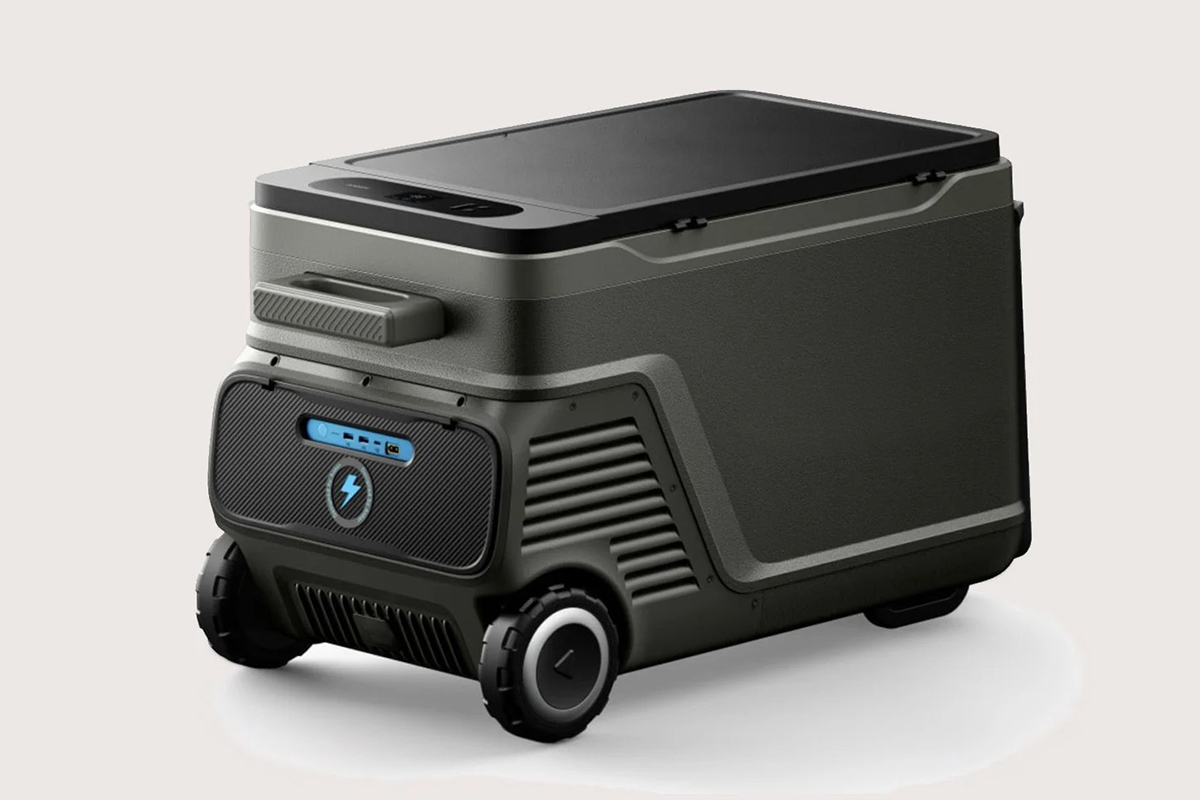
6.2 Passive Coolers
Passive coolers, also known as traditional ice chests or iceboxes, do not rely on any external power source. Instead, they use ice or cold packs to keep food and beverages cool.
- Cooling Mechanism: Passive coolers rely entirely on the ice or cold packs placed inside. The ice absorbs heat as it melts, keeping the contents cool. This is the most basic form of cooling and does not require power.
- Advantages of Passive Coolers:
- Independence from Power Sources: Passive coolers do not need electricity, gas, or any other external power, making them perfect for outdoor activities in remote locations, such as camping, fishing, or road trips.
- Silent Operation: Without compressors or motors, passive coolers work silently, providing a peaceful environment compared to powered coolers.
- Low Operational Costs: There are no ongoing energy costs with passive coolers. They only require ice or cold packs, which makes them more economical in the long term.
- Simplicity and Durability: These coolers are simple to use and maintain, with no complex mechanisms or parts. Their rugged design makes them more durable, especially for outdoor environments.
- Disadvantages of Passive Coolers:
- Limited Cooling Duration: Since passive coolers rely on ice, their cooling capability is limited to how long the ice stays frozen. Typically, ice melts over a period of hours or days, requiring regular replenishment.
- Less Precise Temperature Control: Passive coolers do not offer the same level of temperature consistency or precision as powered coolers. Once the ice melts, the internal temperature can rise.

6.3 Key Differences Between Powered and Passive Coolers
- Energy Requirements: Powered coolers need a consistent power source (electricity, battery, or gas), while passive coolers operate solely with ice, requiring no external energy.
- Cooling Efficiency: Powered coolers can achieve and maintain lower temperatures more consistently and rapidly. Passive coolers depend on the ice melting, which is a slower process.
- Maintenance and Operational Costs: Powered coolers incur ongoing costs for power consumption, batteries, or fuel, while passive coolers only require ice, making them more cost-effective in the long run.
- Noise Levels: Powered coolers often produce noise due to compressors or motors, while passive coolers are completely silent.
7. Why KingStar Cooler Boxes Excel in Cooling Performance
As a leading custom manufacturer, KingStar’s every cooler box is the result of rigorous engineering aimed at maximizing cooling efficiency, durability, and user convenience. From advanced materials to carefully optimized structures, our cooler boxes are built to outperform in the harshest outdoor environments. Here’s a detailed breakdown of the features that set KingStar coolers apart.
7.1 Advanced Insulation System for Extended Ice Retention
- High-Performance Insulation Material: We use premium-grade polyurethane (PU) foam with high closed-cell content, achieving low thermal conductivity to minimize heat transfer. This ensures that ice stays frozen longer, maintaining contents near-freezing even under high ambient temperatures.
- Optimized Wall and Lid Thickness: Strategic thickness distribution enhances insulation at critical points, such as the lid and base, where heat ingress is most severe. Our lid insulation is particularly reinforced to reduce overall temperature rise inside the cooler.
- Superior Insulation Effectiveness: Testing shows that KingStar’s cooler boxes maintain ice for up to 5–7 days under typical outdoor conditions, depending on model and usage.
7.2 Durable Materials and Reinforced Construction
- Tough Exterior Shell: We select UV-resistant high-density polyethylene (HDPE) for the outer shell, offering superior impact resistance and resistance to weathering from prolonged sun exposure.
- Reinforced Structural Design: Internal ribbing, thicker corners, and reinforced lid sections ensure that the cooler can endure rough handling, heavy stacking, and high-load conditions without deformation.
- Long-Term Durability: Whether on rocky campsites, in salt-spray marine environments, or during rugged off-road adventures, our cooler boxes are built to last for years without performance degradation.
7.3 Airtight Lid Seal and Precision Fit
- High-Elasticity Gasket System: Food-grade silicone gaskets create an airtight seal between the lid and body, dramatically reducing cold air escape and warm air entry.
- Compression Lid Design: Uniform lid pressure ensures consistent gasket compression across all edges, preventing thermal bridging and enhancing cooling efficiency.
- Secure Closure Mechanisms: Robust latches and molded-in hinge designs guarantee that the lid remains tightly sealed even under heavy movement or vibration.
7.4 Integrated Easy-Drain Systems
- Leak-Proof Drainage: Integrated drainage plugs with O-ring seals allow quick removal of melted ice water without requiring the cooler to be tilted or opened unnecessarily.
- Smart Drain Placement: Drain ports are positioned at the lowest internal points to ensure complete drainage, avoiding water stagnation that could compromise cooling efficiency.
- Ease of Maintenance: Quick drainage facilitates faster cleaning, drying, and preparation for the next use, helping maintain hygiene and prolong service life.
7.5 Practical Storage Layouts Optimized for Real Use
- Upright Bottle Accommodation: Our internal layouts are designed to hold standard 1L and 1.5L PET bottles upright, preventing spills and maximizing the use of available space.
- Optimized Airflow: Proper spacing between stored items promotes airflow around the contents, maintaining uniform low temperatures throughout the cooler.
- Load-Resistant Interior Surfaces: Reinforced floor and wall designs withstand point loads from heavy bottles or supplies without buckling, maintaining cooler integrity over repeated use.
7.6 User-Focused Details for Maximum Convenience
- Heavy-Duty Handles: Ergonomically designed, high-strength handles make transport easy even when the cooler is fully loaded.
- Reinforced Lids: Lids are strengthened to support additional weight, such as being used as temporary seats or platforms in outdoor environments.
- Non-Slip Feet: Anti-slip bases prevent the cooler from sliding on wet surfaces like boat decks or truck beds.
7.7 Customization to Meet Diverse Market Needs
- Flexible Options: KingStar offers customizable coolers, allowing adjustments to size, color, branding, insulation thickness, and accessory add-ons to suit different customer segments, from outdoor sports to commercial logistics.
- Tailored Applications: Whether you need ultra-light models for day trips or heavy-duty coolers for extended expeditions, we tailor our products to deliver optimal performance for every scenario.
8. Tips for Maximizing Cooler Efficiency
Picture this: You’re at the beach on a hot summer day, the sun is blazing, and the waves are calling. You crack open your cooler, expecting that refreshing drink, but instead, you’re met with warm sodas and soggy sandwiches. Not the ideal beach day you had in mind, right? The key to keeping everything chilled and fresh lies in how you pack and use your cooler. Maximizing its efficiency can ensure that your food and drinks stay cooler for longer, so you can enjoy your day without worrying about the heat.
Here are some simple yet effective tips to make sure you’re getting the most out of your cooler’s cooling power:
8.1 Pre-Chill the Cooler and Contents Before Use
- Chill the Cooler: Think of your cooler as a sponge. If it’s warm, it’ll immediately soak up the cold from your ice, causing it to melt faster. To prevent this, pre-chill the cooler by storing it in a cool place or filling it with ice for a few hours. This step lowers the internal temperature of the cooler, giving your ice a head start and preventing it from melting too quickly when you first load it up.
- Pre-chill Your Items: Just like putting warm food in a fridge makes it work harder, adding warm drinks or snacks to your cooler introduces heat, making the ice melt faster. If you can, pre-chill the food and drinks you plan to store. This reduces the heat influx, allowing the ice to last longer and keeping everything fresh.
8.2 Use Large Ice Blocks for Slower Melting
- Block Ice vs. Cubes: Large ice blocks melt slower than smaller cubes, which means they can keep your cooler colder for a longer period of time. Consider using block ice or ice packs, which take longer to melt and release cold more gradually than smaller ice cubes.
- Efficiency in Packing: Fill empty spaces in the cooler with larger blocks or ice packs to ensure better insulation and less air movement, which can speed up the melting process.
8.3 Minimize the Number of Times the Cooler is Opened
- Reduce Heat Infiltration: Every time the cooler is opened, warm air enters, which can cause the ice to melt faster. Try to keep the cooler closed as much as possible to maintain a consistent cold environment inside.
- Organize for Easy Access: Before packing your cooler, organize the items in a way that makes it easier to find what you need without opening the lid multiple times. Using separate containers or compartments can help you minimize lid openings.
8.4 Always Store the Cooler in Shaded or Cool Areas
- Avoid Direct Sunlight: When placing your cooler outdoors, always keep it in a shaded area. Direct sunlight increases the temperature inside the cooler, causing the ice to melt faster.
- Cool, Ventilated Areas: If possible, store your cooler in a cool, well-ventilated area, like under a tree or in the shade of a structure. This reduces heat exposure and helps preserve the ice for a longer period.
These tips are like having a secret weapon to make sure your cooler is performing at its best. With these tricks, your cooler can handle even the hottest days, keeping everything inside chilled and fresh for hours.
These tips are like having a secret weapon to make sure your cooler is performing at its best. With these tricks, your cooler can handle even the hottest days, keeping everything inside chilled and fresh for hours.
Conclusion
Imagine this: You’re out in the wild, away from the hustle of everyday life, but when you open your cooler, your drinks are lukewarm, and your snacks are a soggy mess. That’s a real party killer, right? Now that you understand how cooler boxes work—how ice preserves your food, how insulation keeps the chill in, and how heat transfer is minimized—you’re ready to make the most of your cooler. The right cooler can be the difference between a refreshing break and a frustrating one.
Whether you’re on a weekend camping trip or a long road adventure, trust KingStar to keep your food and drinks as fresh as the day you packed them. Make your outdoor moments worry-free with our expertly crafted coolers!
